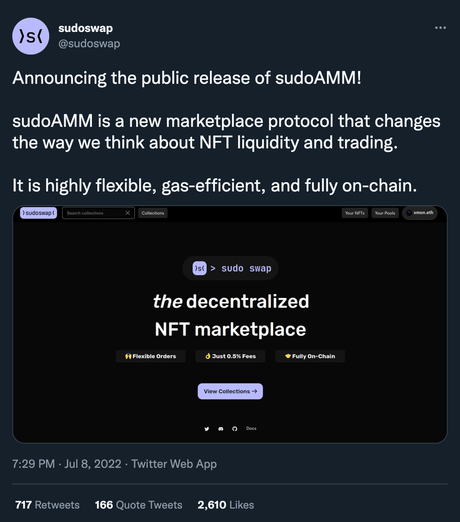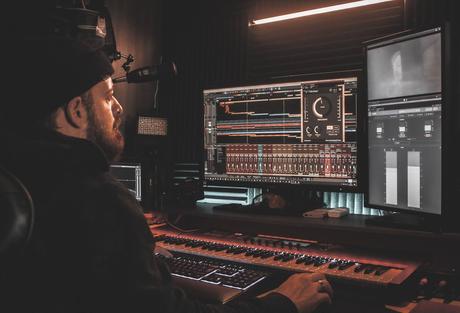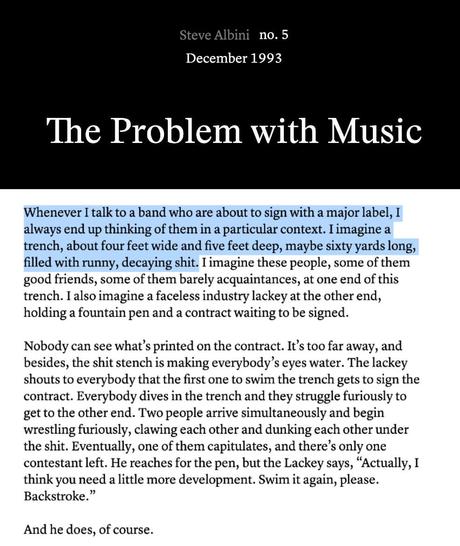NFT royalties are a fee that the NFT artists receive for their work whenever it gets resold. They’re paid in crypto to the address from which the NFT originated. By convention the full fee usually amounts to 10% of the art’s value, 5% of which goes to the artist.
That fee is a big cut for speculative traders, who need to take that royalty fee into account when they are derisking.
Do you have to pay NFT royalties? Nope. That’s the short answer, at least.
NFT royalties are a convention
NFT royalties exist by convention. The OG NFT artists demanded them from marketplaces and were successful in that. Over time the royalty fee became standard.
Nowadays the royalty payment is built in with the transaction process on most big NFT marketplaces like Opensea.
But they are not in any way built into the NFT itself. If you don’t want to pay the royalty, technically you can just … not honor the convention.
And that’s exactly what sudoswap.xyz did when they launched their AMM for NFTs. The trading fee there is just 0.5% and that’s it.
You don’t pay the royalty because they didn’t build it in. Sudoswap in fact made it their main selling point.

NFT royalties are not as progressive as their proponents claim
The community that form around NFT trading is divided on the topic of royalties.
The main current claims that that’s why NFT art is so revolutionary: It’s Web3 way of rewarding the artists. Blockchain finally makes it possible to trace the payments fairly and openly, artists can finally get the royalties they deserve. Crypto makes the payments secure and transparent, so everyone can see what’s going on.
I’d venture a guess that the material point is really that NFT royalties accrue with traded volume. The fee gets paid every time the NFT gets resold. It’s 5% which is not a lot, but if the artwork trades a lot, the artist gains a lot in royalties.
It’s the same principle as with P2P crypto arbitrage where you get a margin of around 2.5%, or the half of the typical NFT royalty, but if you have enough demand to cycle your money between P2P and CEX quickly, you can do the proverbial doubling of your bitcoin in one year, as shown in the case study in this strategy.
With the boom of speculative trading in NFTs, royalties work really well for the artists.

The problem with NFT royalties is that they need to be enforced, just like traditional royalties. Insisting on payments for artists in NFTs will just replay the history of the music industry.
Kevin Parker from the Australian band Tame Impala said in a Reddit AMA a few years back he thinks music will be free at some point anyway, and that he’s up for it. “You want to know a story? Up until recently, from all of Tame Impala’s record sales outside of Australia I had received…. zero dollars.” The royalties went on distribution and marketing.
Were they paying him on blockchain, he would have known where exactly his royalties went. But if he was bound by a contract that authorised other people to make marketing expenses on his behalf, seeing the money trail probably wouldn’t have helped him in any way.
Is this ‘decentralization’?
The only way to enforce the worldwide honouring of a royalty fee is to create a dedicated, burocratic industry around it. That’s about as revolutionary as the graphic design of Zuck’s Metaverse avatar.
NFTs have demonstrated they do have utility. We see that sometimes with NFT keys in retroactive airdrops. These NFTs are a powerful tool as a key that is bound only with a crypto address.
It entitles the address that holds the NFT to receiving income or to getting access to a platform and says good night and good luck to regulators - you can always move the NFT, the platform can always generate a new NFT key if necessary.
Blockchain doesn’t solve the problem of your not getting the money that you’re due, it never will. But at least let it be used for something innovative.

thebaffler.com: “The Problem with Music”, December 1993

